|
Updated May 29, 2024 When Canon management decided on March 31, 1985 to embark on a two-year program to develop a completely clean-sheet auto focus (AF) 35mm SLR system, they were granting Minolta a two-year head-start in that burgeoning market. This was a result of the instantaneous success of the Minolta 7000, introduced almost two months before. Canon realized that their first FD-mount AF SLR, the T80, due to be introduced in April of that year, was completely outclassed by the 7000 and bold measures were thus imperative. Consequently, Minolta had the 35mm AF SLR market to itself for 14 months, until Nikon introduced their F-501 (N2020 in USA) in April 1986. Right on schedule, in time for their 50th anniversary as a camera manufacturer, Canon brought out the EOS 650 on March 1, 1987. Within two months, it became the top-selling AF SLR in Japan and Europe and was a match and more for the 7000 and F-501. But Minolta had not been sitting idly by. The summer of 1988 brought their second-generation enthusiast AF SLR, the Minolta 7000i, which was a huge jump forward from its not-exactly-ancient ancestor, as is usually the case in the early stages of the growth cycle of any technology. Canon had caught up to (and surpassed in a few areas) Minolta's and Nikon's first-gen AF SLRs, but how would the second generation of EOS fare against a much more sophisticated competitor? A Massive Leap Forward As any technology matures, the improvements from generation to generation tend to grow smaller in increment over time. The gap between 1st and 2nd-gen products is usually far greater than, say, 6th and 7th-gen versions. This was borne out with 35mm SLRs in the late-'80s & early-'90s, especially when it came to AF, multi-zone metering, and internal film advance performance, seeing as these were the newest (and thus least-developed) 35mm SLR technologies at the time. For example, the Minolta 7000i had three times the amount of AF sensors, which covered 12 times the viewfinder area of the 7000. The AF system's sensitivity was 4 times greater in lower light, and there was a fancy new near-infrared AF assist light (the same type as they used in their flash units, just less powerful) with a 9-meter (30') range that projected a contrasting line grid for the AF sensors to pick up on in low light and even total darkness. The 7000i AF system also featured predictive AF and automatically switched to continuous AF when subject motion was detected, neither of which were available on the 7000 (which lacked any sort of continuous AF capability). The metering system was linked to the three AF sensors, had 6-segment evaluative, centerweighted (automatically actuated for Manual exposure only), and spot (easily activated in any exposure mode by a dedicated button) modes versus centerweighted-only in the 7000. The CPU had more than double the clock speed, 5 times the ROM, and 4 times the RAM of the 7000. Even the film advance was 50% faster. The 7000i also added a feature called Creative Expansion Cards, using insertable cards (not unlike a modern SD card) purchased separately, that would add (or more correctly, unlock) features within the camera. The most useful of these cards was the Customized Function card that enabled the user to personalize seven camera functions to their preference. Canon responded in 1989, replacing the EOS 650 & 620 with the EOS 630 (EOS 600 outside of North America). While maintaining the same form factor, the EOS 630 received new software, more efficient coreless motors, a 1.5x bump in ROM capacity, and a 40%-increase in CPU clock speed, all of which combined (claimed Canon) to halve AF speed from the previous EOS models. Canon also took aim at Minolta's Customized Function feature with their own Custom Functions in the 630. But they bettered Minolta by fully integrating this feature within the camera itself (at no extra cost and no fiddling with a removable card :-)). This kept EOS in the game, but the 630/600 was more about maximizing the first-gen platform than matching the 7000i step for step. Cue the spring of 1990... Canon Strikes Back Three years to the month from the debut of EOS, Canon's literature proclaimed, "Introducing the New EOS Generation". The model was the EOS 10/10s/10QD (Europe & Asia/North America/Japan). And it definitely had some 7000i in its eye ;-). Here is a chart comparing the two:
It seems like Canon's engineers sat a 7000i on the table and proceeded to match or better it in nearly every specification. I mean, even the weight was within 10 grams ;-). But it was more than just specifications or features; Canon's integration of those features made for some tangible benefits in the user experience:
All of which matters naught to the 35mm purist. The EOS 10 was the first enthusiast-level Canon to exchange hybrid (polycarbonate over a metal chassis) construction for a complete fiberglass-reinforced polycarbonate chassis with only the stainless steel lens mount to hang your metal-head hat on. A hybrid-construction hater will positively despise (cue Daffy Duck: "You'rrre dethhhpicable!") the EOS 10. Canon's pathway to perdition was assured: if they were going to an all-plastic chassis with the enthusiast EOS bodies, there would be no hope for the consumer-level ones. Sure enough, alongside the EOS 10 came the EOS 700 which soon begat the poster-child for all plastique Canons to this day...the Rebel (this might be a good time for a dose of Gravol ;-)). 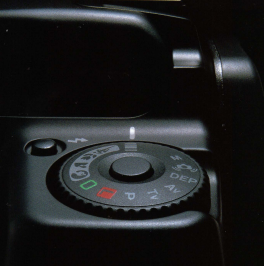 The EOS 10 was a true tweener when it came to Canon's AF SLRs regarding controls and their layout. It set the pattern for all future enthusiast EOS models with its left-side Command Mode dial with the newb-oriented green rectangle all-auto mode and Scene modes below the Lock (OFF) position on the dial and the typical advanced P(rogram), Tv (Time value aka Shutter-priority), and Av (Aperture value aka Aperture-priority) modes along with Canon's proprietary DEP (depth-of-field) mode above Lock. Camera Shake (audible beeper for slow shutter speeds, and (M)anual exposure rounded out the Advanced Settings. While later models would incorporate ISO, Multiple Exposures, Exposure Bracketing, and Custom Functions on the Command Dial, the 10 carried over the slightly kludgy bottom-rear-located film rewind, Function (this was a new button that replaced the Drive mode button on earlier EOS with added features), AF mode, and Exposure Compensation (another new dedicated control) button locations of the first-gen EOS bodies. However, it did at least eliminate that annoying, floppy door that hid these controls on its predecessors. The 10 was also the first enthusiast EOS to include a built-in flash and intervalometer (the built-in intervalometer would be eliminated from all future film EOS besides the professional and prosumer models). The hand and thumb grips were fuller and more defined than previous models and would carry over to future generations. The 10 would also prove to be the last mid-range EOS to eschew the soon-to-be-ubiquitous Quick Control Dial (QCD) that first debuted on the pro-targeted EOS 1 of 1989. The market momentum that Canon had built with the first generation of EOS was not wasted. With its USM lens and broad feature-set, the 10 and its fellow second-gen EOS bodies simply tightened Canon's grip into a half-Nelson on the competition. Together with Minolta's missteps and Nikon's traditional trepidation to adopt the latest in technology, Canon's doubling-down on the inherent advantages of EOS and the EF lens mount only served to widen the gap. In another five years, Canon's market share would be pushing 50%, something they would never have dreamt of in the manual focus era (when they topped out at just over a third). Long Gone and Forgotten For all of its capability and innovation, the EOS 10 was soon eclipsed by the third-generation EOS SLRs. Even before that, it seemed like Canon was determined to bury their own camera under an avalanche of consumer-centric Rebel and Photura advertising. For instance, in only four 1990 issues of Popular Photography magazine (April, May, June, and August), did Canon feature the EOS 10s in advertisements, and two of those included the consumer-level EOS 700. So that left only two standalone plugs for the camera in the pages of PP...ever. All the while, Nikon and Minolta made sure to have their N8008 and 7000i and later 8000i models featured in every month, and within the first 20 pages or with a multipage block at the end of the issue. Canon couldn't even bring themselves to drop an ad for the 10s in the Feb. 1991 issue when Pop Photo published their full Test Report on the camera. And in Canon's own dealer promotion brochures, released biannually, the 10 never got more than a page to itself, while the consumer cameras got multiple levels of advertising support, including TV, which Canon never lavished on its enthusiast models. Kind of tells you what their priorities were ;-). About the only promotional thing that Canon did for the 10 was to produce a special pewter-colored edition in 1991 with a matching 35-135/4-5.6 USM kit lens to commemorate their 60-millionth 35mm film camera produced which just happened to be an EOS 10. Fear not, EOS-haters, it was only a thin coat of paint over the standard plain black polycarbonate, lest you think Canon was starting to get sloppily sentimental ;-). Only a year and a half after the 10's debut, Canon brought out the EOS Elan (EOS 100 internationally) which, while targeted a bit lower than the 10, hardly gave up anything in the way of features and made better use of the Command Dial and also included the QCD on a non-professional EOS for the first time. The Elan's main claim to fame, however, would be its quietness (1/4 the level of the 10, impressive for sure). In contrast to their, shall we say, muted promotion of the 10 upon its debut, Canon made no less than an eight-page ad drop in Pop Photo when they released the Elan/100 in the USA in late-1991. Then, in the fall of 1992, the EOS A2(E) (EOS 5, internationally) took over as Canon's top prosumer body and was just more than the EOS 10 in virtually every way. As noted at the outset, the gains made in later iterations become less and less dramatic. The A2(E) was such a well-rounded, advanced body, that it would sell into the 2000s. That would only serve to exacerbate the fall of the 10 into obscurity. Canon was able to successfully bifurcate the 10's market position into two with the Elan and A2(E) and sold a boatload of both models as a result. The A2(E) would serve as a backup for pros and also cream off the top of the enthusiast market, while the Elan would spawn three more iterations of itself as the most successful line of mid-range AF SLRs in the industry. All the while, 10s were consigned to closets and attics. But there is where opportunity knocks for EOS enthusiasts today... The EOS 10 - Over Thirty Years Later With a mini film-revival currently underway, even Canon, the least-nostalgia-inducing SLR producer of all time, is seeing a rise in the value of its FD and early-EOS cameras. The EOS 650/620/630 trio bring, on average, the highest prices of any first-gen AF SLRs (which is still pretty cheap, all things considered). But the EOS 10 remains a sleeper, with equivalent-condition copies coming in at half the cost of a 650, a camera that the 10 destroys in every performance category, and a quarter of that of an AE-1 (which still fetches crazy prices despite being the most common film SLR of all time). Obviously, the AE-1 will generally appeal to a different buyer than an AF SLR, but anyone considering a first-gen EOS 650 or 630 should give the 10 a good look. It corrects many of the ergonomic deficiencies of the earlier models while taking a massive step forward in AF performance. While the Elan has that yummy QCD and is super quiet, it still doesn't feel quite as good in my hand (particularly, the tighter front grip that bunches up my medium-sized fingers). The 10 is a bit noisier than the Elan, but is still miles ahead of any of its competitors from back in the day. Foibles of the EOS 10 are the same as for the 650 or Elan: 1) shutter bumpers that turn to goo and foul the left sides of the shutter blades, leading to the dreaded "bc" error message on the LCD and a jammed shutter, and 2) keeping the fire stoked with 2CR5 batteries. The solution for #1 is pretty straightforward...break out the 99% isopropyl alcohol or naphtha and carefully clean the shutter blades and the area immediately below them until no more black goo is seen. #2 can be more or less problematic depending on where you live in the world, but I have found that ordering online is the most economical for me (usually about half of the cost of a brick-and-mortar retailer) at around $8-10 USD for genuine Panasonic batteries. So who is the "big" 10 for? Well, for those with aging eyes that kick up a fuss when trying to focus manually, it offers excellent AF performance for the money, especially with a USM lens attached. It was also the first AF SLR to show which AF sensor was active by lighting it up in red, a handy feature that quickly spread industry-wide and remains viable today. If you happen to be a full-frame Canon DSLR user wanting to play with film a bit and use your current glass, the 10 could be just the ticket. It also works with any of Canon's infrared remote releases from the last 30 years, too. Conversely, if you are the type that derives your photographic juice at least partly from the emotional bond you form with your equipment, you'll want to...awww, who am I kidding, we lost anyone like that even before the Read More link came up ;-). Call it the Canon Curse. The EOS 10 is the Nikon N8008/F-801's counterpart for Canonistas: eminently capable, yet lost in the shuffle between more appealing, yet less capable, older models, and its descendants that cleaned up its few quirks and foibles and were even more loaded with features. I have a 650 and an ELAN in the closet with the 10. The 650 definitely feels heftier, which it literally is, and the ELAN basically equals the feature-set of its 18-month-older sibling. And yet, I just like the way the 10 sits in my hands, and how those little AF points light-up. I know its a cold-blooded, clinical Canon, but I don't care...it just feels good in my hands ;-). References: Canon EOS 10s @ https://global.canon/en/c-museum/product/film140.html Canon EOS 10 Commemorative Kit @ https://global.canon/en/c-museum/product Popular Photography on the Canon EOS 10s - Apr. 1990 & Feb. 1991 Popular Photography on the Minolta 7000i & 8000i - Oct. 1989 & Mar. 1990 Various Canon Dealer Promotional Brochures @ https://www.pacificrimcamera.com Canon EOS 10S Sales Brochure @ https://www.pacificrimcamera.com/rl/rlCanonEOS
0 Comments
Your comment will be posted after it is approved.
Leave a Reply. |
C.J. OdenbachSuffers from a quarter-century and counting film and manual focus SLR addiction. Has recently expanded into 1980's AF point and shoots, and (gack!) '90s SLRs. He even mixes in some digital. Definitely a sick man. Categories
All
Archives
June 2024
|
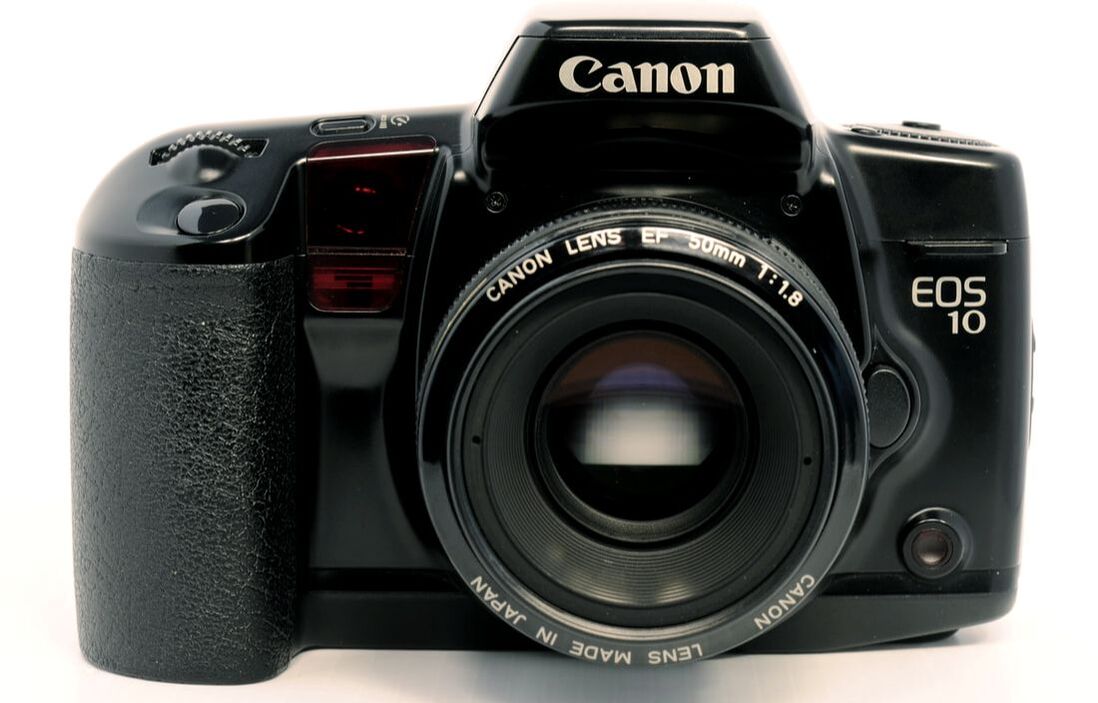
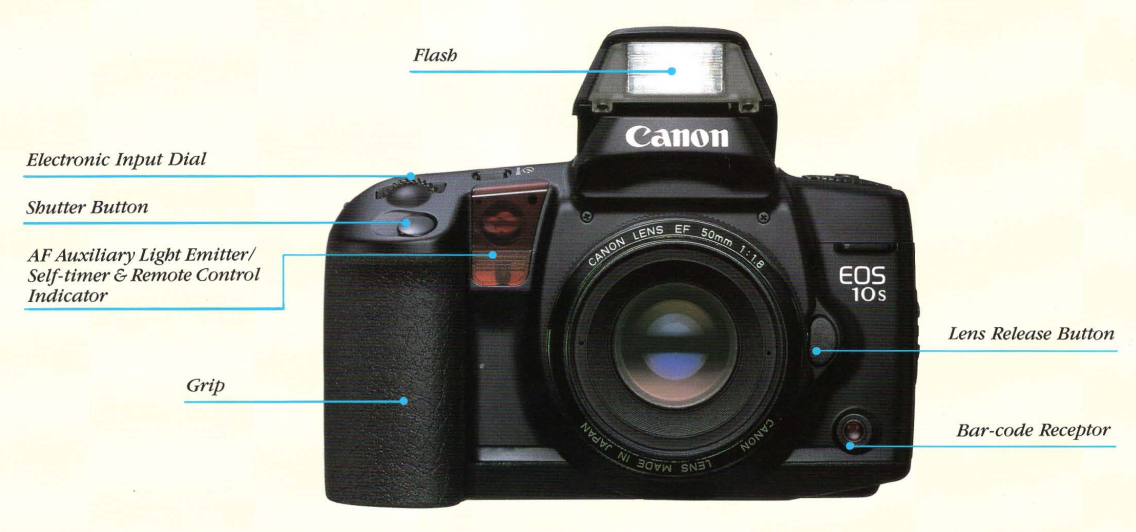
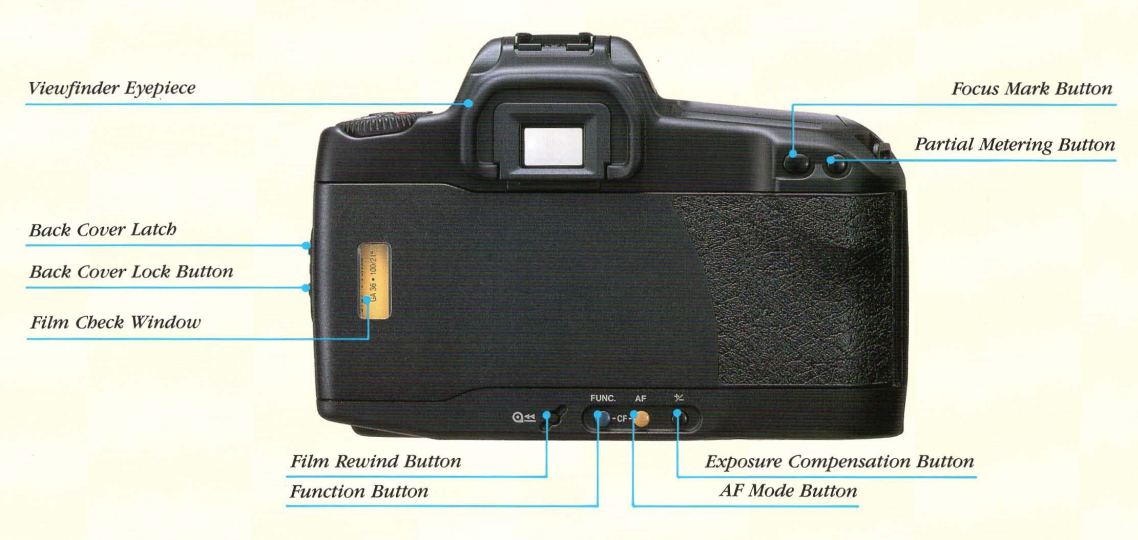

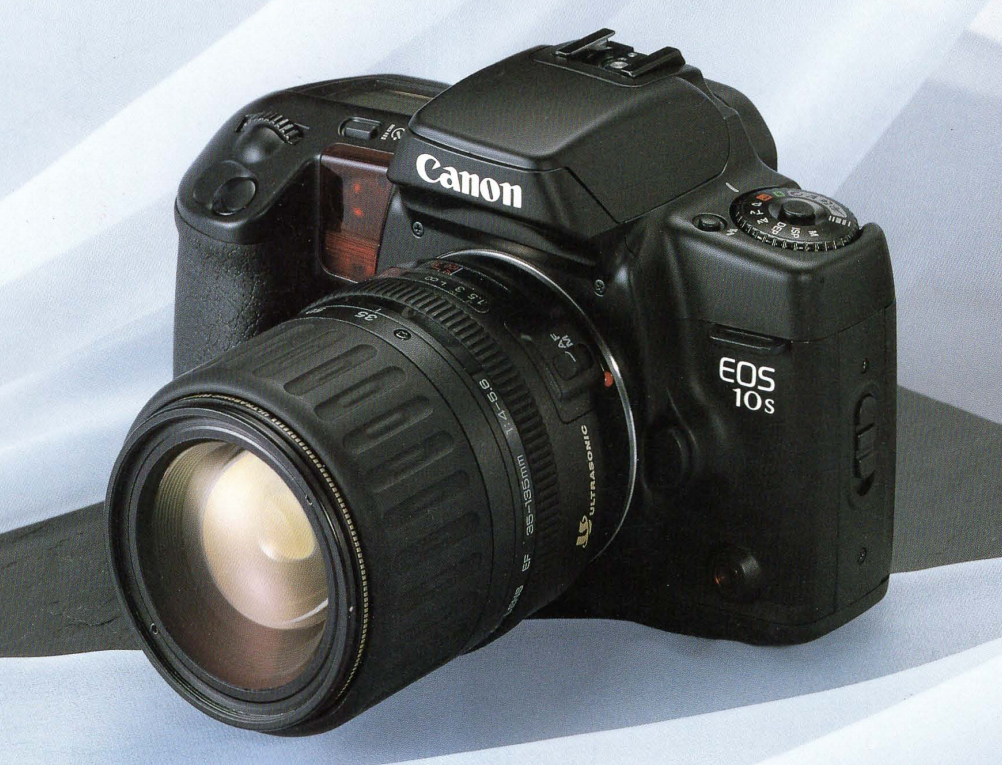
 RSS Feed
RSS Feed